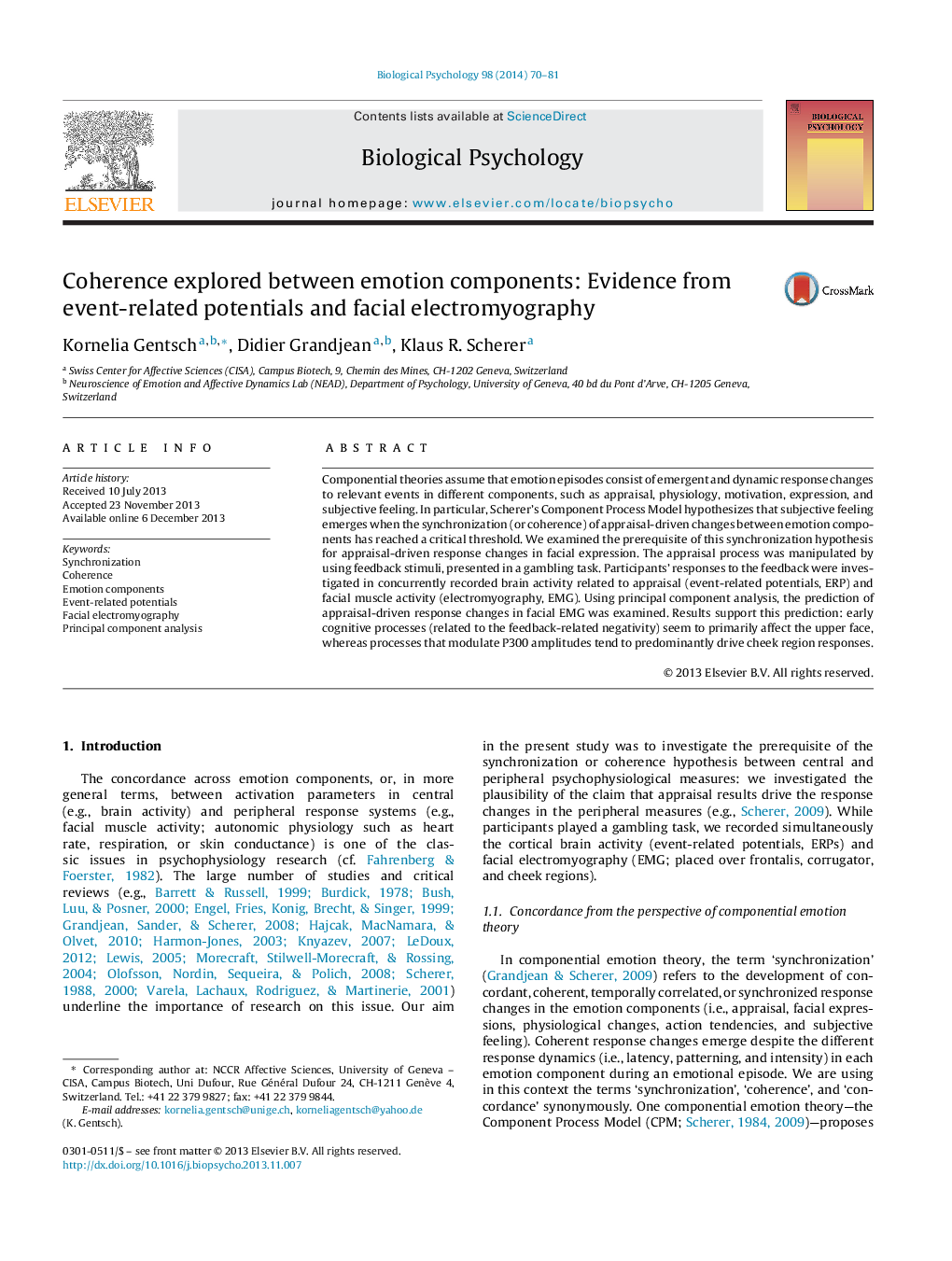| کد مقاله | کد نشریه | سال انتشار | مقاله انگلیسی | نسخه تمام متن |
|---|---|---|---|---|
| 920933 | 1473875 | 2014 | 12 صفحه PDF | دانلود رایگان |
• We test a requisite of emotion component synchronization: appraisal results drive facial expressions.
• We concurrently recorded ERPs (appraisal) and EMG (facial expression).
• We used principal component analysis to investigate coherence between the measures.
• Early cognitive processes may drive upper face responses.
• Event categorization processes may modulate cheek region responses.
Componential theories assume that emotion episodes consist of emergent and dynamic response changes to relevant events in different components, such as appraisal, physiology, motivation, expression, and subjective feeling. In particular, Scherer's Component Process Model hypothesizes that subjective feeling emerges when the synchronization (or coherence) of appraisal-driven changes between emotion components has reached a critical threshold. We examined the prerequisite of this synchronization hypothesis for appraisal-driven response changes in facial expression. The appraisal process was manipulated by using feedback stimuli, presented in a gambling task. Participants’ responses to the feedback were investigated in concurrently recorded brain activity related to appraisal (event-related potentials, ERP) and facial muscle activity (electromyography, EMG). Using principal component analysis, the prediction of appraisal-driven response changes in facial EMG was examined. Results support this prediction: early cognitive processes (related to the feedback-related negativity) seem to primarily affect the upper face, whereas processes that modulate P300 amplitudes tend to predominantly drive cheek region responses.
Journal: Biological Psychology - Volume 98, April 2014, Pages 70–81
